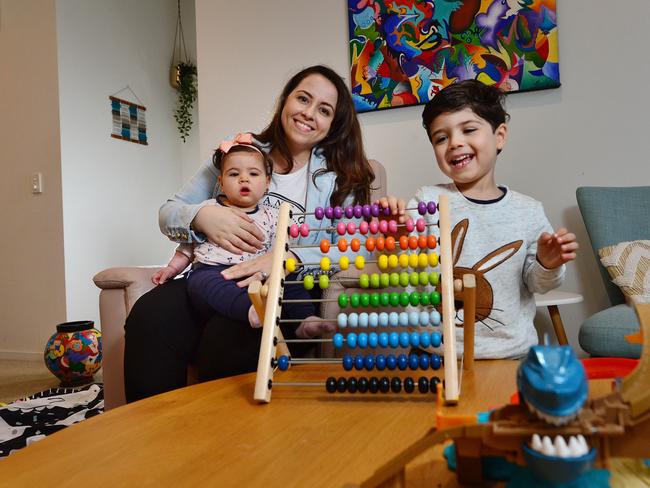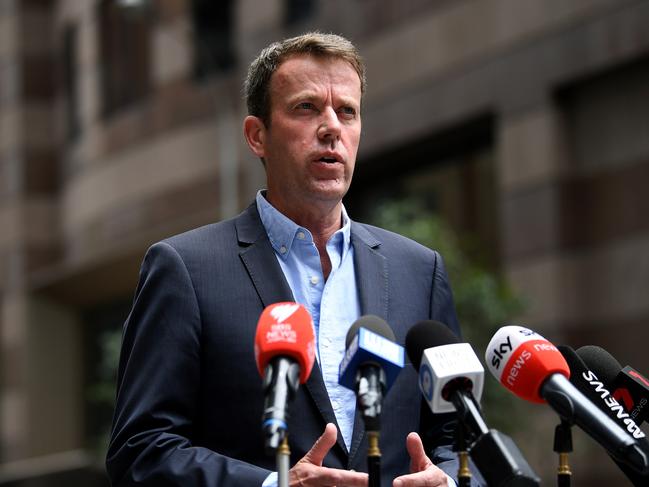How parents and childcare workers will be affected by the end of the JobKeeper
The sudden end to the Federal Government’s JobKeeper program in the childcare sector means significant changes for parents and workers alike. This is how you will be affected.
Millions of Australians will not get an extension on the Federal Government’s free childcare offering due to coronavirus beyond June, Prime Minister Scott Morrison has announced.
This is what the changes means for parents and childcare workers.
When is free childcare ending?
Federal Education Minister Dan Tehan has announced the targeted scheme introduced in April due to the COVID-19 pandemic will come to an end on July 12, with a return to child care subsidy program on July 13.
He said providers were “on the brink of collapse” when the initial announcement was made but that immediate threat how since passed.

“Australia’s success at flattening the curve. has seen demand continue to grow for the sector,” he said. “Demand has hit 74 per cent.”
The temporary measure was always intended to be rolled out short-term. Transition measures will be implemented.
What does it mean for childcare workers?
The JobKeeper payment for childcare workers will be stopped.
Instead the government will introduce a $708 million support package that will require a guaranteed level of employment for workers coming off JobKeeper.
Childcare workers will receive transitional payments, which the government argues are only slightly less than wage subsidies. Childcare services will receive this transitional payment from July 20 that Education Minister Dan Tehan predicts will be a “tiny bit” less than JobKeeper.
The funding will granted subject to childcare fees being capped at the level they were in late February.
Transition payments, of 25 per cent of fee revenue will be paid to centres from July 13 to September 27. At the moment the government is paying centres 50 per cent of their fee revenue.
The transitional funding will remain in place until September 27.
What happens to their JobKeeper payments?
The $1500 JobKeeper payments that have supplemented childcare staff wages will end on July 20. Prime Minister Scott Morrison had previously said such payments would last until the end of September.
Staff will likely be then earning a small amount less that what is being provided through JobKeeper. $708 million will be paid to childcare centres to help with them with the transition and with their cash flow.
Mr Tehan said it was important to understand the childcare sector was keen to accept the transition payments rather than JobKeeper.
“Their view is that spreads more equitably the support right across the sector,” he said.
The major childcare operators have reportedly been complaining that casual workers who had started earning $1500 a fortnight through JobKeeper were refusing to come to work due to coronavirus fears.

It will pull JobKeeper permanently out of the sector, replacing it with the $708 million transition package worth about a quarter of its pre-crisis revenue. The wage subsidy was worth about a third of fees to those services that could access it but not all were eligible.
What does it mean for parents?
Under the changes, parents will have to go back to paying childcare fees again from July 13 as demand grows for services.
The Child Care Subsidy will be reintroduced but the criteria for subsidised care for families hit by the coronavirus downturn will be loosened.
“The Government will also ease the activity test until October 4 to support eligible families whose employment has been impacted as a result of COVID-19,” Mr Tehan said.
The government will ease the activity test on the number of hours that people have to spend working, studying or volunteering so they can qualify for the subsidies.
“(The minister) heard our message that we needed a relaxation of the activity test families still need to pay out-of-pocket costs — child care will no longer be free — and they’ll still be means-tested on that,” Goodstart chief executive John Cherry told ABC Radio National.

MORE NEWS
Parents won’t able to afford fees, childcar providers warn
Kobe Bryant’s widow seeks ‘hundreds of millions’
Aussie dollar hits near-yearly high as optimism grows
This means parents will be able to access up to 100 hours of subsidised childcare.
However families will still need to pay to cover the ‘gap’ portion of the fees.
The average family will likely pay around $23 a day for long day care and any fees above the baseline rate their childcare centre charges.
Government subsidies are between 20 per cent and 85 per cent of the baseline fee.
What should parents do if they are using childcare right now?
Parents need to discuss their situation with their childcare provider, their employer and Centrelink where necessary.
They will also need to understand how the easing of requirements – hours spent working, studying or volunteering – will affect how they qualify for the reintroduced Child Care Subsidy.
The Australian Childcare Alliance said it would be very difficult to predict what attendance would be like.

“We will monitor the pressure of operator costs to ensure the new policy settings regarding fees being maintained at February levels do not cause undue harm to families, educators or the providers,” president Paul Mondo said.
Advocacy group Early Childhood Australia is also worried about the impact of families no longer being able to afford care.
“We should not be experimenting with women’s capacity to work and children’s early education — both should be given priority,” chief executive Sam Page said.
Mr Tehan couldn’t guarantee that demand wouldn’t go backwards once people who had lost work had to start paying fees again.
